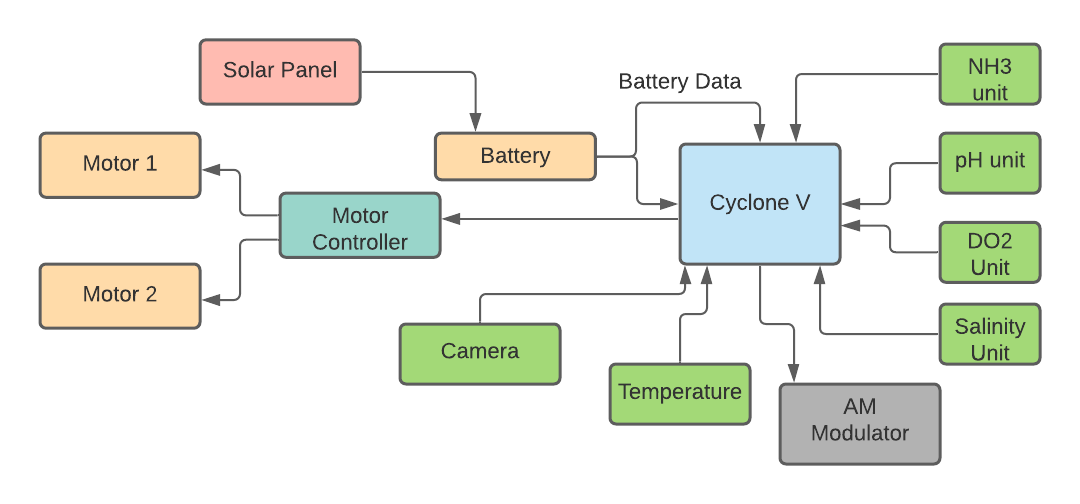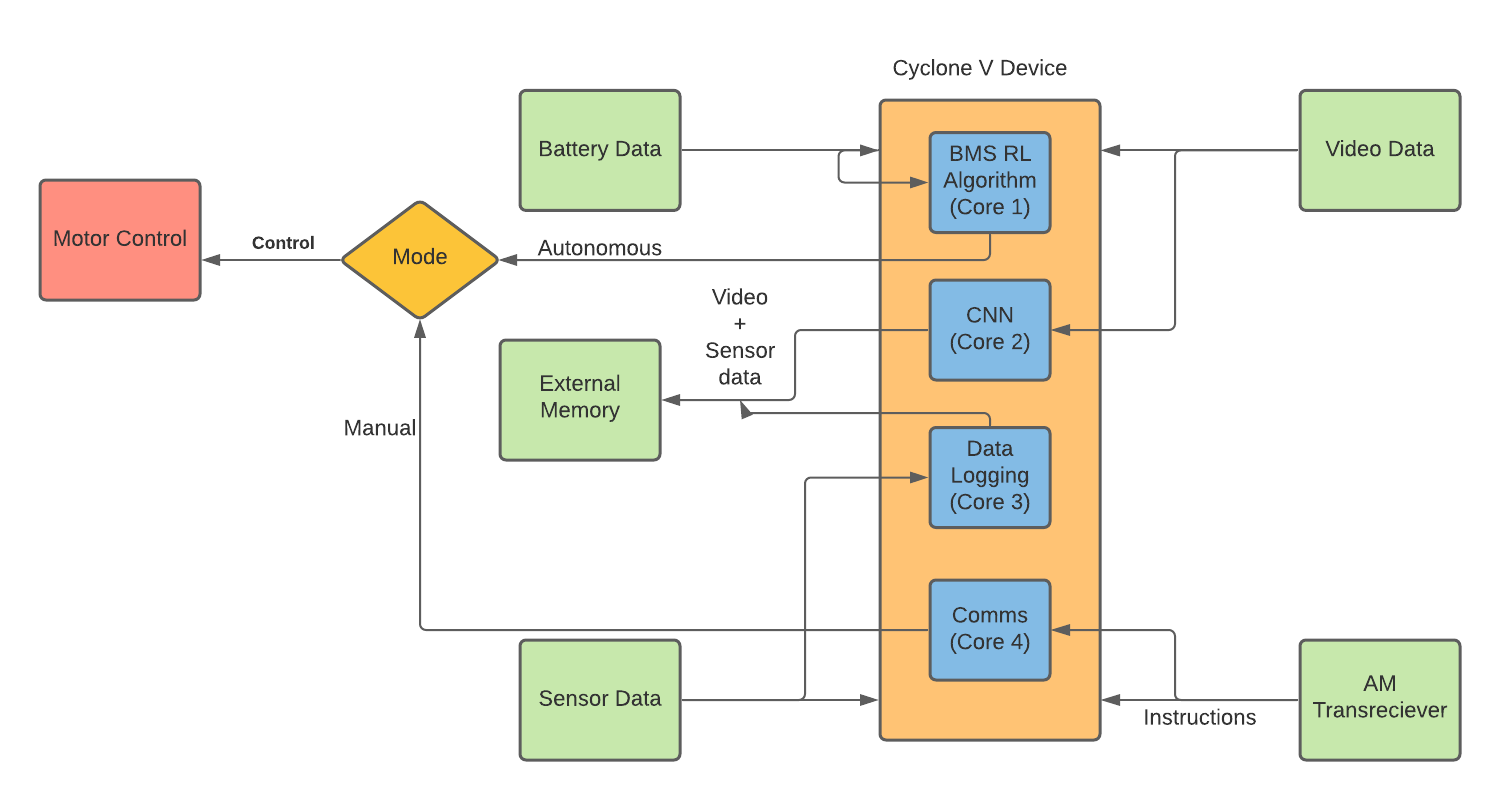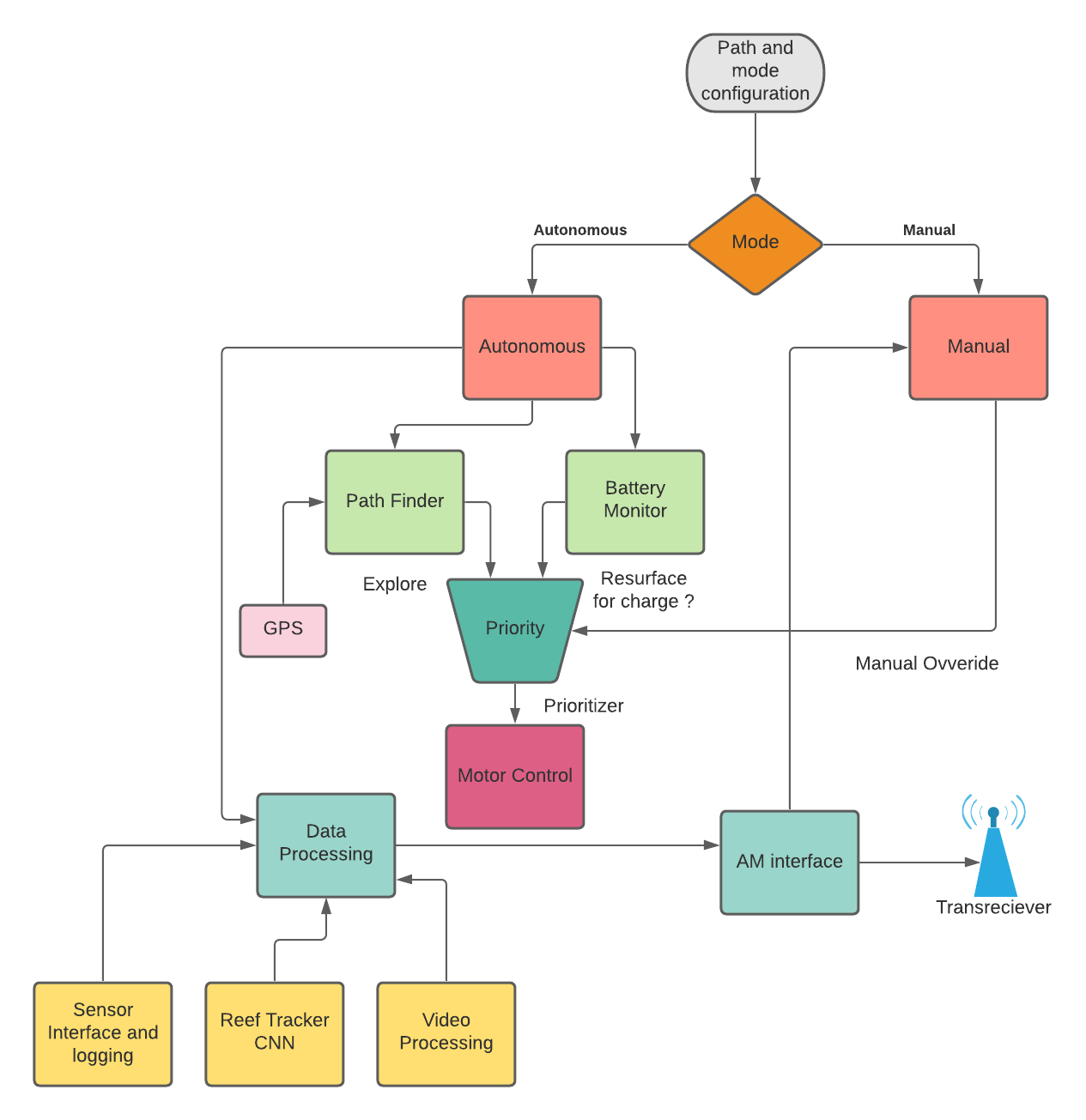
This project is an implementation of a Neural Network on the FPGA platform to monitor coral reefs and updates the details on a cloud-based dashboard. Also, ocean parameters like salinity, pH, dissolved oxygen, the temperature can also be monitored. This device would be a small battery-powered submarine that would go to selected regions in the oven and collect the data from those regions. The submarine would be autonomous but we would also provide manual control via satellite communication in case of issues. The dashboard can be used to view the route, elapsed time, available battery, and the data being collected by the submarine.
Project Proposal
1. High-level project introduction and performance expectation
Purpose of Design
Coral Reefs are home to millions of fish and aquatic life all around the world. They take hundreds of years to form and are extremely beautiful. Due to global warning, there is a huge reduction in coral reefs and we as engineering students wanted to build a solution that would track these coral reefs in real time and help us understand how they are getting affected.
Application Scope
The design that we propose is a smart miniature submarine that would use computer vision to monitor the coral reefs and simultaneously use the onboard sensors to monitor pH, dissolved oxygen, salinity, ammonia, etc. Our solution is battery-based but, it would have solar panels to charge itself. The battery life estimator has a reinforcement learning based model that would decide if the submarine can explore more space or it would have to resurface to recharge its batteries. All of the data would be relayed to the user via a dashboard. Satellite communication would be used to collect the data from the submarine and the data would be sent to a base station from which the data would be pushed to the cloud platform. Also, there would be options to set the systems only to logging mode which would capture video and sensor data and would store them in the on board storage devices.
The solution is autonomous but we have also included a manual control option that would use satellite communication to relay the commands. The communication mechanism would be AM for the controls.
Targeted users
Researchers, governments, and students who are trying to monitor the coral reefs in real-time.
Reason for using Intel FPGA Devices
We plan to use Intel FPGAs because of our familiarity with them and the software tools.
2. Block Diagram

Hardware Block Diagram

Resource Allocation Diagram

Software Flow Diagram
3. Expected sustainability results, projected resource savings
The implementation for our project has a lot of I/o and communication interface requirements (I2C, SPI, and UART). Also, there is a need for analog blocks. If the same implementation had to be done using microcontrollers we would have to use multiple devices and it would complicate the design.
Also, we would need to process videos, and doing this on microcontrollers is difficult. Coming to power the design has to be ultra-low power as this needs to work for long hours and using an FPGA can help us build systems where the power utilization can be minimized.
The most important parameter is reconfigurability as we would keep making changes in the hardware architecture to improve the performance. Due to our familiarity with Intel Software Development tools, we want to use Intel FPGAs.
4. Design Introduction
Purpose of Design
Coral Reefs are home to millions of fish and aquatic life all around the world. They take hundreds of years to form and are extremely beautiful. Due to global warning, there is a huge reduction in coral reefs and we as engineering students wanted to build a solution that would track these coral reefs in real time and help us understand how they are getting affected.
Application Scope
The design that we propose is a smart miniature submarine that would use computer vision to monitor the coral reefs and simultaneously use the onboard sensors to monitor pH, dissolved oxygen, salinity, ammonia, etc. Our solution is battery-based but, it would have solar panels to charge itself. The battery life estimator has a reinforcement learning based model that would decide if the submarine can explore more space or it would have to resurface to recharge its batteries. All of the data would be relayed to the user via a dashboard. Satellite communication would be used to collect the data from the submarine and the data would be sent to a base station from which the data would be pushed to the cloud platform. Also, there would be options to set the systems only to logging mode which would capture video and sensor data and would store them in the on board storage devices.
The solution is autonomous but we have also included a manual control option that would use satellite communication to relay the commands. The communication mechanism would be AM for the controls.
Targeted users
Researchers, governments, and students who are trying to monitor the coral reefs in real-time.
Reason for using Intel FPGA Devices
We plan to use Intel FPGAs because of our familiarity with them and the software tools.
5. Functional description and implementation
Using the Quartus software and Qsys system builder we would instantiate 4 softcore which would be performing different tasks like :
1. Video Processing
2. Battery Management
3. Data Logging {sensors+ Video data}
4. Communication
1. Video Processing In this core we would be running a CNN that would be trained on Coral images and we would be analyzing the reefs. Once we have a good amount of data on the problems with the reefs we would update the model to analyze the problem too.
2. Battery Management As this design is autonomous we should ensure that the vehicle does not run out of battery. To do this we will formulate a simple Markov Decision Process and would engineer a battery management system. A dedicated softcore would be handling this task.
3. Data Logging We are going to use the 3rd softcore for logging the sensor data and the video data into external memory.
4. Communication The onboard communication interface is going to use AM. So, we would have a dedicated core to process the information.
In the area of analysis, multiple AM transceivers would be placed that would relay the information to a point where it can be pushed onto the cloud or transmitted via satellite communication depending on the availability.
6. Performance metrics, performance to expectation
The implementation for our project has a lot of I/o and communication interface requirements (I2C, SPI, and UART). Also, there is a need for analog blocks. If the same implementation had to be done using microcontrollers we would have to use multiple devices and it would complicate the design.
Also, we would need to process videos, and doing this on microcontrollers is difficult. Coming to power the design has to be ultra-low power as this needs to work for long hours and using an FPGA can help us build systems where the power utilization can be minimized.
The most important parameter is reconfigurability as we would keep making changes in the hardware architecture to improve the performance. Due to our familiarity with Intel Software Development tools, we want to use Intel FPGAs.
7. Sustainability results, resource savings achieved
Hardware Block Diagram

Resource Allocation Diagram

Software Flow Diagram

8. Conclusion
0 Comments
Please login to post a comment.